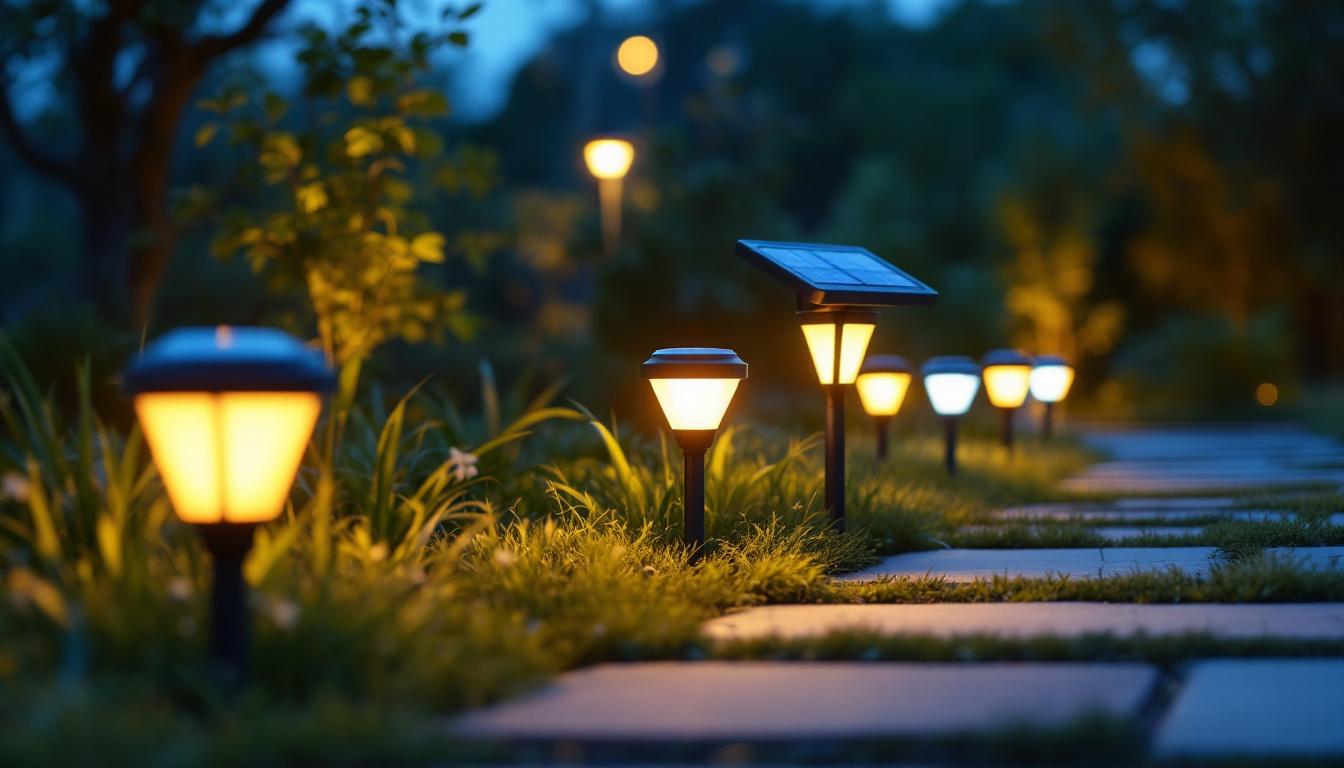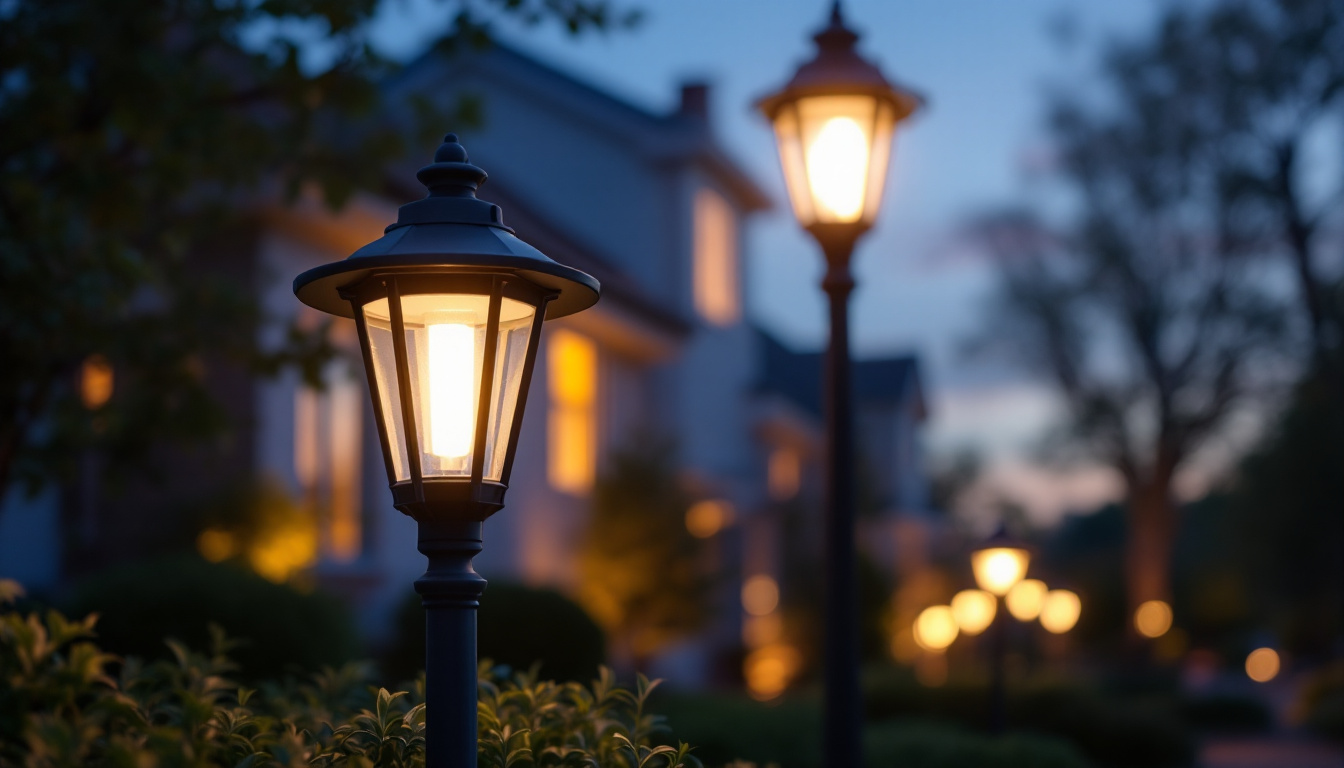
As the demand for energy-efficient solutions continues to rise, outdoor solar sensor lights have emerged as a popular choice for both residential and commercial properties. These lights not only provide illumination but also enhance security and aesthetic appeal. For lighting contractors, understanding the nuances of these products is essential to making informed recommendations to clients. This guide aims to equip contractors with the knowledge needed to choose the right outdoor solar sensor lights.
Outdoor solar sensor lights are designed to harness solar energy, converting it into electricity to power LED lighting. Equipped with motion sensors, these lights activate when movement is detected, ensuring that energy is used efficiently. This technology not only reduces electricity costs but also minimizes environmental impact. As a result, solar sensor lights have become increasingly popular among homeowners looking for sustainable and cost-effective lighting solutions. They not only illuminate dark areas but also contribute to a greener planet by reducing reliance on fossil fuels.
To make informed choices, it’s crucial to understand the key components of solar sensor lights. These typically include solar panels, LED bulbs, batteries, and motion sensors. The solar panel captures sunlight during the day, while the battery stores this energy for use at night. LED bulbs provide bright illumination, and motion sensors detect movement, triggering the light. Additionally, many models come equipped with adjustable settings, allowing users to customize the sensitivity of the motion sensor and the duration of the light activation, further enhancing their efficiency and user-friendliness.
There are various types of solar sensor lights available on the market, each catering to different needs and preferences. Some common types include wall-mounted lights, floodlights, and pathway lights. Wall-mounted lights are ideal for illuminating entryways, while floodlights provide broader coverage for larger areas. Pathway lights enhance visibility along walkways and driveways. Moreover, some innovative designs feature decorative elements, allowing homeowners to choose lights that complement their outdoor aesthetics while still providing functional illumination. These lights can also come with features such as color-changing LEDs or integrated smart technology, offering even more versatility.
The advantages of solar sensor lights are numerous. Firstly, they offer significant energy savings, as they rely on renewable solar energy. Secondly, their installation is typically straightforward, requiring no complex wiring. Additionally, many models are designed to withstand various weather conditions, ensuring durability and longevity. Finally, the presence of motion sensors enhances security, deterring potential intruders. Beyond these practical benefits, solar sensor lights also promote safety by illuminating dark areas, reducing the risk of accidents during nighttime. Furthermore, their eco-friendly nature aligns with the growing trend of sustainable living, making them an attractive option for environmentally conscious consumers who wish to reduce their carbon footprint while enhancing their outdoor spaces.
When selecting outdoor solar sensor lights, several factors must be taken into account to ensure optimal performance and satisfaction. These factors include brightness, battery capacity, motion detection range, and build quality.
Brightness is a crucial aspect of outdoor lighting. Measured in lumens, the brightness level will determine how well an area is illuminated. For outdoor spaces, a minimum of 300 lumens is generally recommended for effective lighting. However, for larger areas or security purposes, lights with 800 lumens or more may be necessary. It’s also worth noting that the color temperature of the light can impact visibility; warmer tones (around 3000K) create a cozy atmosphere, while cooler tones (above 5000K) enhance visibility and alertness, making them ideal for security applications.
The battery capacity of solar sensor lights directly influences their runtime. A higher capacity battery will store more energy, allowing the light to operate for extended periods. It’s essential to consider the average hours of darkness in the area where the lights will be installed, as this will affect how long the lights can function each night. Additionally, the type of solar panel used can impact charging efficiency; monocrystalline panels, for instance, are known for their higher efficiency and performance in low-light conditions, ensuring that your lights remain functional even during cloudy days.
Motion detection range varies among different models, typically ranging from 10 to 50 feet. For effective security lighting, a wider detection range is preferable. Additionally, sensitivity settings can be an important feature, allowing users to adjust how easily the light activates in response to movement. Some advanced models even offer customizable detection zones, which can help minimize false triggers caused by pets or passing cars, ensuring that the lights activate only when truly needed. This feature not only enhances security but also conserves battery life, extending the overall functionality of your solar sensor lights.
Proper installation is vital for the effectiveness of solar sensor lights. Factors such as location, angle, and height can significantly impact performance. Lighting contractors should be aware of these considerations to ensure optimal results for their clients.
For maximum efficiency, solar panels should be positioned to receive direct sunlight for the majority of the day. This often means placing lights in open areas, away from trees or structures that may cast shadows. Additionally, positioning lights near entry points or dark areas enhances security and visibility.
The height at which solar sensor lights are installed can affect their performance. Generally, mounting lights at a height of 6 to 10 feet is recommended to maximize the detection range of motion sensors. The angle of the light should also be adjusted to ensure that the beam covers the desired area effectively.
While solar sensor lights require less maintenance than traditional lighting solutions, some care is still necessary to ensure longevity and performance. Regular cleaning and battery checks can help maintain optimal functionality.
Dust, dirt, and debris can accumulate on solar panels, reducing their efficiency. Regular cleaning with a soft cloth or sponge can help maintain their ability to capture sunlight. It’s advisable to check the panels at least once a month, especially in areas with heavy pollen or dust.
Over time, the batteries in solar sensor lights may lose their ability to hold a charge. Depending on the type of battery used, replacement may be necessary every few years. Contractors should educate clients on the signs of battery failure, such as reduced runtime or dimming lights.
Not all solar sensor lights are created equal. When selecting products for clients, it’s essential to prioritize quality over cost. Investing in reputable brands with a history of reliability can lead to greater customer satisfaction and fewer service calls.
Researching brand reputation and customer reviews can provide valuable insights into the performance and durability of solar sensor lights. Look for brands that offer warranties and have a track record of positive feedback from users.
Ensure that the products meet relevant safety and performance standards. Certifications from recognized organizations can indicate that the lights have undergone rigorous testing and meet industry standards for quality and safety.
While the initial cost of solar sensor lights may vary widely, it’s essential to consider the long-term savings associated with energy efficiency and reduced maintenance. Contractors should help clients understand the total cost of ownership, including installation, potential savings on electricity bills, and maintenance costs.
When budgeting for solar lighting projects, consider not only the cost of the lights themselves but also installation expenses and any additional features that may be desired, such as remote controls or smart technology integration. Providing clients with a comprehensive estimate can help them make informed decisions.
Highlighting the return on investment (ROI) can be a powerful selling point for solar sensor lights. By illustrating potential savings on electricity bills and the longevity of solar products, contractors can help clients see the value in choosing solar lighting solutions.
The solar lighting industry is continuously evolving, with new technologies and designs emerging regularly. Staying informed about current trends can help contractors offer the latest and most effective solutions to their clients.
Smart solar sensor lights are gaining popularity, allowing users to control their lighting remotely via smartphone apps. Features may include scheduling, dimming options, and real-time notifications. This level of control enhances user experience and offers greater flexibility in managing outdoor lighting.
Modern solar sensor lights come in various designs, catering to different aesthetic preferences. From sleek, contemporary styles to more traditional looks, contractors can find products that complement the architecture of any property. This variety allows for greater customization and client satisfaction.
Outdoor solar sensor lights represent a significant advancement in energy-efficient lighting solutions. For lighting contractors, understanding the intricacies of these products is essential for making informed recommendations. By considering factors such as brightness, battery capacity, installation, and maintenance, contractors can ensure that their clients receive the best possible solutions for their outdoor lighting needs.
As the industry continues to evolve, staying abreast of trends and innovations will further enhance the ability to provide top-notch service. By prioritizing quality and educating clients on the benefits of solar sensor lights, contractors can contribute to a more sustainable and secure future.
Ready to elevate your lighting game with the most efficient outdoor solar sensor lights? Look no further than LumenWholesale, where we provide contractors with the highest quality, spec-grade lighting products at unmatched wholesale prices. Say goodbye to local distributor markups and hello to our extensive selection that meets rigorous industry standards. With LumenWholesale, you can enjoy the convenience of bulk buying with free shipping, ensuring you get the premium lighting your projects deserve at the best value. Don’t compromise on quality or price. Wholesale Lighting at the Best Value is just a click away. Experience the LumenWholesale difference today!

Discover innovative hacks for smart lighting contractors to enhance exterior lamp post lights.

Discover how solar lampposts are revolutionizing urban landscapes by enhancing energy efficiency and sustainability.

Discover the benefits and installation tips of solar LED lamps in this comprehensive guide tailored for lighting contractors.

Discover how choosing the right recessed light housing can elevate your lighting projects and secure more contracts.